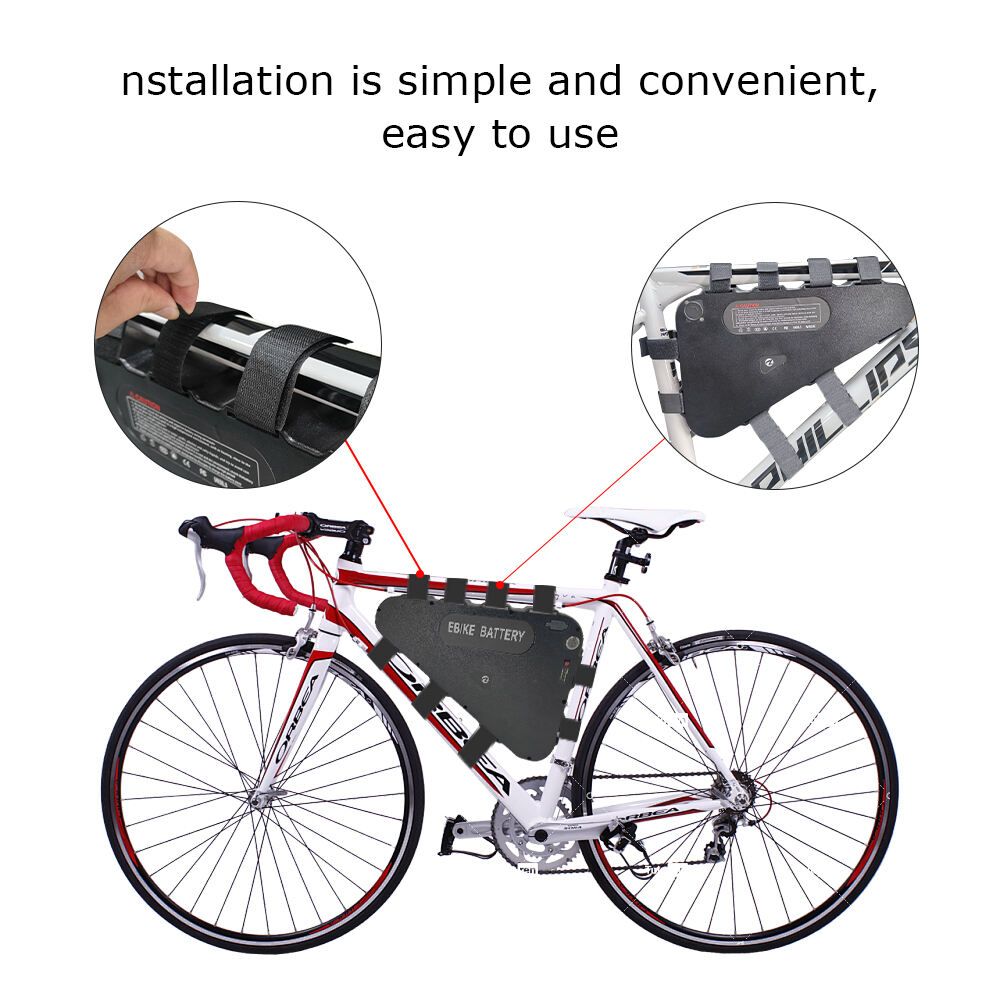Understanding the Power Behind Electric Bikes
The heart of every electric bicycle lies in its ebike battery. As we move into 2025, the technology behind these power units continues to evolve, offering riders more options, better performance, and increased reliability. Whether you're upgrading your existing electric bike or building a custom setup, choosing the right battery can mean the difference between an exceptional riding experience and constant frustration.
Modern ebike battery systems have come a long way from their early predecessors. Today's options feature advanced chemistry, smart management systems, and improved energy density. This comprehensive guide will help you navigate the complex world of electric bike power systems and make an informed decision for your specific needs.
Essential Battery Specifications for Electric Bikes
Voltage and Power Output
The voltage of an ebike battery determines the power output and overall performance of your electric bike. Most modern systems operate on either 36V or 48V, with some high-performance models utilizing 52V batteries. Higher voltage typically means more power and better hill-climbing ability, but it's crucial to ensure compatibility with your bike's motor and controller.
When selecting voltage, consider your riding style and terrain. A 36V system might be perfect for casual riding on flat surfaces, while a 48V ebike battery could better serve those tackling challenging hills or requiring faster acceleration. Remember that higher voltage systems often come with a higher price tag and may require more sophisticated charging solutions.
Capacity and Range Considerations
Battery capacity, measured in ampere-hours (Ah) or watt-hours (Wh), directly impacts how far you can ride on a single charge. Most electric bike batteries range from 10Ah to 20Ah, with premium options offering even higher capacities. To calculate potential range, multiply the voltage by amp-hours – for example, a 48V 15Ah battery provides 720Wh of energy.
Real-world range depends on various factors, including rider weight, terrain, assistance level, and weather conditions. As a general rule, expect 15-50 miles from a single charge, depending on these variables. When choosing capacity, consider your typical riding distance and charging accessibility.
Battery Chemistry and Technology Advancements
Lithium-ion Innovations
The most common ebike battery technology uses lithium-ion cells, specifically designed for cycle durability and consistent power delivery. Recent advancements have introduced new chemistries like lithium iron phosphate (LiFePO4) and lithium nickel manganese cobalt oxide (NMC), each offering unique advantages in terms of safety, lifespan, and performance.
Modern lithium-ion batteries feature improved energy density, allowing for greater range without increasing physical size. These developments have also led to better temperature management and reduced degradation over time, ensuring your investment maintains its performance longer.
Smart Battery Management Systems
Today's ebike battery packs incorporate sophisticated battery management systems (BMS) that monitor cell health, regulate charging, and protect against common issues like overcharging or excessive discharge. These smart systems often connect to smartphone apps, providing real-time data about battery status, range estimation, and maintenance needs.
The integration of smart features helps extend battery life and optimize performance. Look for batteries with temperature monitoring, cell balancing, and short-circuit protection. Some advanced systems even offer regenerative charging capabilities, recovering energy during braking or downhill rides.
Mounting Systems and Physical Considerations
Frame Integration Options
The physical design and mounting system of an ebike battery significantly impact both aesthetics and functionality. Modern electric bikes typically feature either frame-integrated or rack-mounted batteries. Frame-integrated solutions offer better weight distribution and a cleaner look, while rack-mounted options provide easier access for charging and replacement.
When selecting a mounting style, consider factors like frame compatibility, security features, and weather protection. Some systems offer quick-release mechanisms for convenient charging, while others prioritize theft prevention with integrated locks.
Weight and Balance Impact
Battery weight affects handling, portability, and overall ride experience. Most ebike battery packs weigh between 5-8 pounds, with capacity being the primary factor. Position this weight strategically to maintain optimal balance and handling characteristics.
Consider your riding style and storage needs when evaluating battery placement. A lower center of gravity generally improves stability, but accessibility for charging and removal might require compromises in mounting location.
Investment and Long-term Value Considerations
Quality and Warranty Coverage
A quality ebike battery represents a significant investment, typically ranging from $400 to $1000 or more. While budget options exist, investing in a premium battery often proves more economical long-term due to better reliability and longer lifespan. Look for manufacturers offering comprehensive warranty coverage, ideally 2-3 years for major defects.
Consider the reputation of the battery manufacturer and their track record in the industry. Established brands often provide better support and more reliable products, even if their initial cost is higher.
Maintenance and Longevity
Proper maintenance significantly extends battery life and maintains performance. Modern ebike battery systems can last 3-5 years or 500-1000 charge cycles when properly cared for. Understanding charging best practices, storage conditions, and regular maintenance requirements helps protect your investment.
Factor in the cost of potential replacement when budgeting for your electric bike. Some manufacturers offer battery recycling programs or trade-in options, which can reduce the environmental impact and cost of future upgrades.
Frequently Asked Questions
What affects ebike battery range the most?
The primary factors affecting range include rider weight, terrain elevation, pedal assist level, wind conditions, and temperature. Riding style and tire pressure also play significant roles in determining how far you can travel on a single charge.
How long should an ebike battery last?
With proper care and maintenance, a quality ebike battery should last 3-5 years or approximately 500-1000 charge cycles. However, capacity gradually decreases over time, and performance may decline before the battery requires replacement.
Can I upgrade my existing ebike battery?
Yes, most electric bikes can accommodate battery upgrades, but compatibility is crucial. Consider voltage, physical dimensions, mounting system, and controller specifications when selecting a replacement or upgrade battery.
What's the best way to store an ebike battery?
Store your battery in a cool, dry place at approximately 40-70% charge. Avoid extreme temperatures and maintain a partial charge during long-term storage. Regular charging to 100% is only recommended before long rides.

